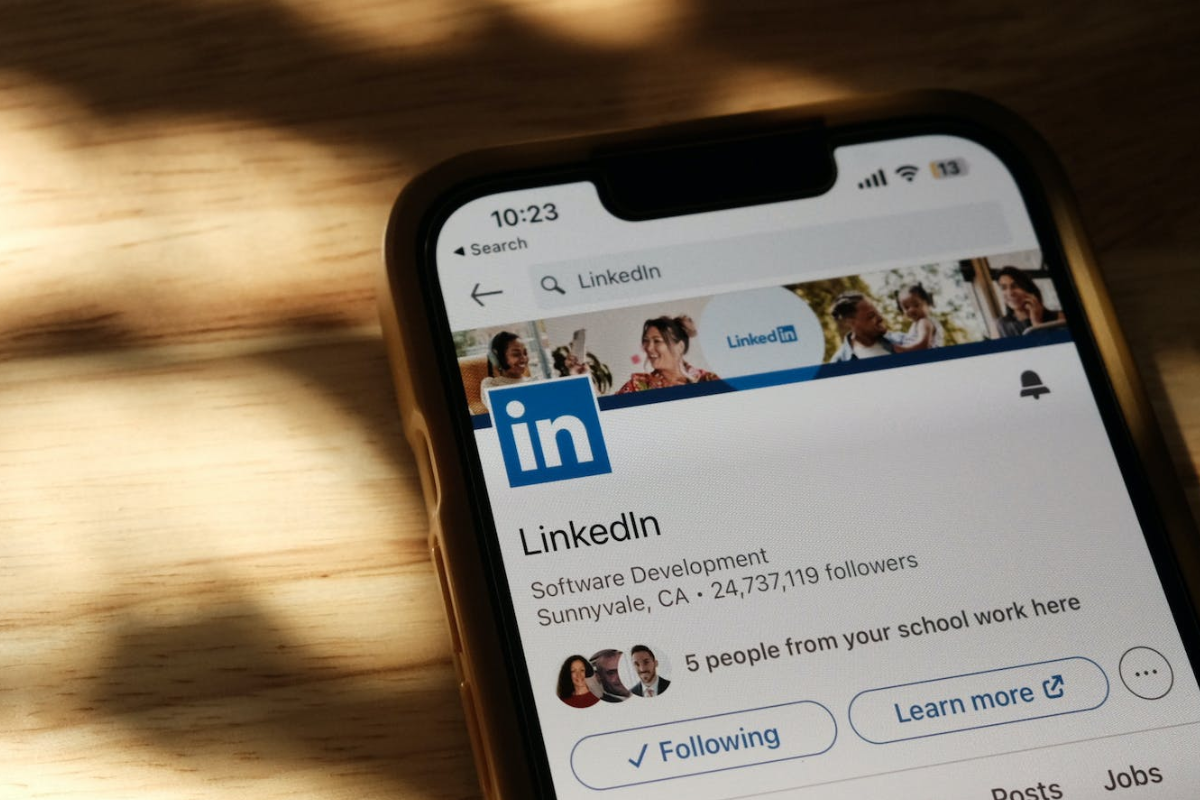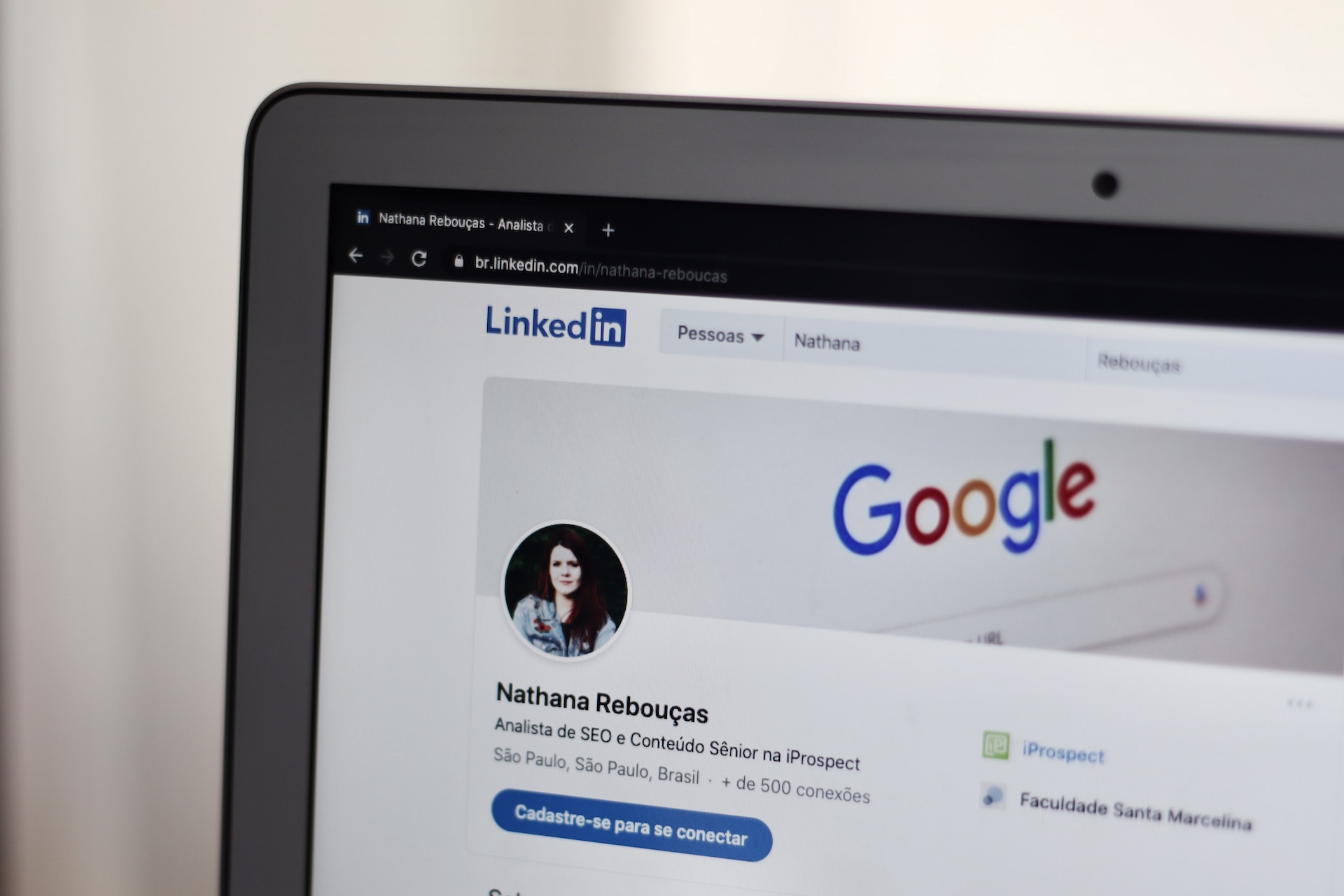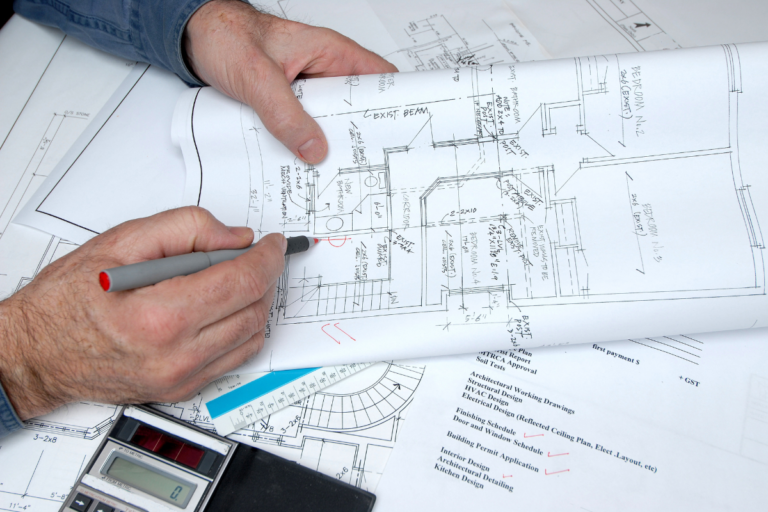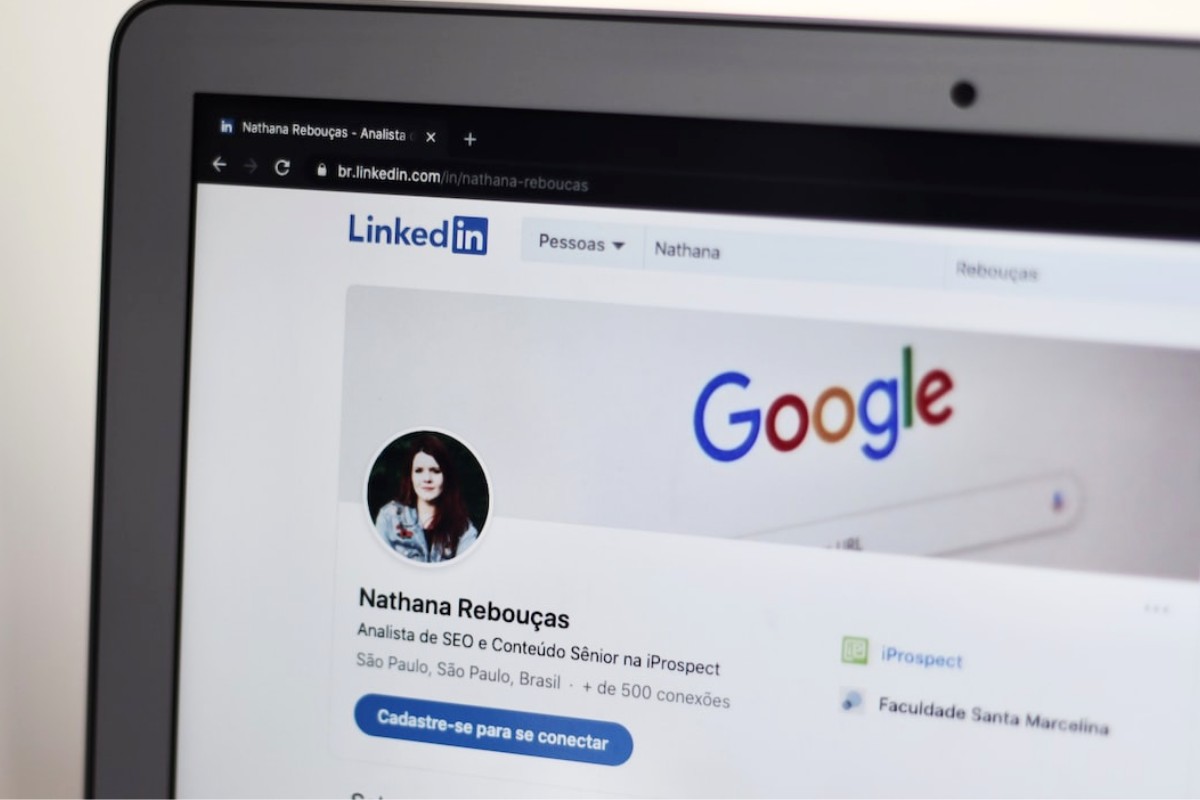Are you looking at how to create a LinkedIn profile that stands out from the crowd?
Whether you’re a job seeker, entrepreneur, or simply looking to expand your professional network, having a strong LinkedIn presence is essential.
In this article, we’ll provide you with expert tips and examples on how to create a professional and marketable LinkedIn profile that showcases your skills and experience.
The first step to creating a strong LinkedIn profile is to choose a professional profile photo.
Your photo should be high-quality, well-lit, and appropriate for your industry.
Additionally, be sure to include a headline that accurately reflects your professional brand and expertise.
Your headline should be concise and attention-grabbing, and it should highlight your unique selling points.
Once you have a strong headline and profile photo, it’s time to craft a compelling summary that tells your story and showcases your skills and experience.
Your summary should be written in the first person and provide a brief overview of your background, including your education, work experience, and any relevant achievements.
Additionally, be sure to include keywords related to your industry and skills to help your profile appear in relevant search results.
Post Contents
- 1 Understanding LinkedIn
- 2 How to Create a LinkedIn Profile
- 3 Crafting Your LinkedIn Headline
- 4 Writing Your LinkedIn Summary
- 5 Listing Your Skills and Endorsements
- 6 Adding Your Experience and Education
- 7 Connecting with Others
- 8 Optimizing Your Profile for Search Engines
- 9 Additional LinkedIn Features
- 10 Troubleshooting and Support
- 11 Key Takeaways
Understanding LinkedIn

If you’re looking to build your professional network and connect with other professionals, LinkedIn is the perfect platform for you.
LinkedIn is a social media platform for professionals, where you can create a profile, add connections, and share your professional experience with others.
LinkedIn Vs Facebook
While Facebook is a social media platform for personal use, LinkedIn is a social media platform for professionals.
On Facebook, you connect with friends and family, share photos and personal updates, and engage with others on a personal level.
On LinkedIn, you connect with other professionals, share your work experience, and engage with others on a professional level.
When it comes to creating a LinkedIn profile, there are a few key differences to keep in mind.
First, your LinkedIn profile should be professional and focused on your work experience.
You should include information about your education, work experience, and any relevant skills or certifications.
On the other hand, your Facebook profile is more casual and focused on your personal life.
While you can still share information about your work experience on Facebook, it’s not the primary focus of the platform.
Overall, LinkedIn is a powerful tool for professionals looking to build their network and connect with others in their industry.
By creating a strong LinkedIn profile, you can showcase your skills and experience to potential employers and clients, and connect with other professionals who can help you grow your career.
How to Create a LinkedIn Profile

Creating a LinkedIn profile is an essential step to building your professional network and advancing your career.
Here are a few key tips to help you create a LinkedIn profile that stands out.
Selecting a Professional Photo
Your profile picture is one of the first things people will see when they visit your LinkedIn profile.
Therefore, it’s essential to choose a professional photo that accurately represents you and your brand.
Here are a few things to keep in mind when selecting a photo:
- Choose a high-quality photo that is at least 400×400 pixels in size.
- Use a headshot that is well-lit and in focus.
- Dress professionally and avoid busy backgrounds.
- Choose a photo that looks like you and represents your personal brand.
Choosing the Right Email Address
Your email address is a crucial part of your LinkedIn profile.
It’s the primary way that people will contact you, so it’s essential to choose an email address that is professional and easy to remember.
Here are a few tips to help you choose the right email address:
- Use an email address that is easy to remember and professional.
- Avoid using email addresses that contain nicknames or inappropriate language.
- Use an email address that is associated with your professional brand.
By following these tips, you can create a LinkedIn profile that accurately represents you and your brand.
Remember to keep your profile up-to-date and engage with your network to build meaningful connections.
Crafting Your LinkedIn Headline

Your LinkedIn headline is one of the most important aspects of your profile as it is the first thing people see when they come across your profile.
It is also one of the most searchable parts of your profile, so it is crucial to make sure it is optimized with relevant keywords.
Here are some tips to help you craft a compelling LinkedIn headline that will make you stand out:
Importance of Keywords in Your Headline
Using relevant keywords in your headline is essential to make sure your profile appears in search results when recruiters and other professionals are looking for someone with your skills and experience.
You should include keywords that describe your profession, skills, and experience.
For example, if you are a marketing professional, you might include keywords like “marketing strategist,” “branding expert,” or “digital marketing specialist.”
It is important to note that your headline should not just be a list of keywords.
You should craft a headline that is both descriptive and attention-grabbing.
Your headline should also reflect your unique selling proposition and what makes you stand out from other professionals in your field.
To optimize your headline for keywords, you can use tools like LinkedIn’s “Skills & Endorsements” section to identify relevant keywords.
You can also review job postings in your field to see what keywords are commonly used.
In summary, your LinkedIn headline is a critical part of your profile that can help you stand out from other professionals in your field.
By including relevant keywords and crafting a compelling headline, you can increase your chances of being found by recruiters and other professionals who are looking for someone with your skills and experience.
Writing Your LinkedIn Summary

Your LinkedIn summary is your chance to showcase your personality and set your professional goals.
It’s the first thing people see when they visit your profile, so you want to make sure it’s engaging and informative.
Here are some tips to help you write a killer LinkedIn summary.
Showcasing Your Personality
Your LinkedIn summary should give people a sense of who you are as a person.
Don’t be afraid to inject some personality into your writing.
Use a friendly tone and write in the first person.
You want people to feel like they’re getting to know you.
Here are some things you might want to include in your summary:
- Your passions and interests
- Your values and beliefs
- Your sense of humor (if appropriate)
- Any unique experiences or skills you have
Remember, your LinkedIn summary is not a resume.
It’s an opportunity to show people what makes you unique.
Setting Your Professional Goals
In addition to showcasing your personality, your LinkedIn summary should also set your professional goals.
What are you hoping to achieve in your career?
What are your strengths?
What sets you apart from other professionals in your field?
Here are some things to keep in mind when writing about your professional goals:
- Be specific: Don’t just say you want to “advance in your career.” Be specific about what you want to achieve.
- Use keywords: Make sure you’re using keywords that are relevant to your industry. This will help your profile show up in search results.
- Be honest: Don’t exaggerate your skills or experience. Be honest about what you bring to the table.
Your LinkedIn summary is your chance to make a great first impression.
Use it to showcase your personality and set your professional goals.
With a little bit of effort, you can create a summary that will help you stand out in a crowded field.
Listing Your Skills and Endorsements

When it comes to creating your LinkedIn profile, one of the most important sections is your Skills and Endorsements.
This is where you can showcase your abilities and expertise to potential employers and colleagues.
In this section, we’ll go over how to choose relevant skills and get endorsements.
Choosing Relevant Skills
To make the most of your Skills and Endorsements section, it’s important to choose skills that are relevant to your industry and career goals.
Here are a few tips to help you choose the right skills:
- Look at job postings in your field to see what skills are in demand.
- Identify the skills you use most in your current or previous roles.
- Think about the skills you want to develop in the future.
Once you’ve identified your skills, add them to your LinkedIn profile.
You can add up to 50 skills, so choose the ones that are most important to you.
Be sure to order them by relevance, with the most important skills at the top.
Getting Endorsements
Endorsements are a great way to show that others recognize your skills and expertise.
Here are a few ways to get endorsements on LinkedIn:
- Endorse others: When you endorse someone else’s skills, they are more likely to endorse yours in return.
- Ask for endorsements: Reach out to colleagues, managers, and other professionals in your network and ask them to endorse your skills.
- Be active on LinkedIn: The more active you are on LinkedIn, the more likely others are to notice your skills and endorse them.
Remember, endorsements should be genuine and reflect your actual skills and expertise.
Don’t ask for endorsements from people who don’t know your work or skills well.
In summary, your Skills and Endorsements section is a crucial part of your LinkedIn profile.
Choose relevant skills and seek out endorsements to showcase your expertise and increase your visibility on the platform.
Adding Your Experience and Education

When it comes to creating a LinkedIn profile, highlighting your experience and education is essential.
This section will show you how to add your job experience and education to your LinkedIn profile effectively.
Listing Your Job Experience
Your work experience is the highlight of your LinkedIn profile. It’s the section where you can showcase your skills and accomplishments.
To add your job experience, follow these steps:
- Click on the “Add profile section” button and select “Work experience.”
- Fill in the job title, company name, and employment dates.
- Write a brief summary of your role in the position.
- Add bullet points that highlight your achievements and responsibilities in the role.
Make sure to tailor your job experience section to your current career goals.
Use relevant keywords to make it easier for recruiters and hiring managers to find you.
Including Your Education
Adding your education to your LinkedIn profile is a great way to showcase your academic achievements and credentials.
Here’s how to add your education:
- Click on the “Add profile section” button and select “Education.”
- Fill in the degree type, field of study, and the name of the institution.
- Add the dates you attended the institution and any relevant honors or awards.
- Write a brief description of your academic experience.
If you have multiple degrees or attended multiple institutions, make sure to add them all to your profile.
Make sure to include any relevant coursework or extracurricular activities that highlight your skills and achievements.
Overall, adding your experience and education is crucial to creating a strong LinkedIn profile.
Make sure to tailor your profile to your current career goals and highlight your achievements and credentials.
Connecting with Others

Creating a LinkedIn profile is just the beginning of your journey.
The next step is to start building your professional network.
LinkedIn offers several ways to connect with other professionals, including:
Building Your Professional Network
The first step in building your network is to connect with people you already know.
This could include former colleagues, classmates, or friends.
You can also search for people in your industry or with similar interests.
When you find someone you want to connect with, send them a personalized invitation.
Let them know why you want to connect and how you can help each other.
It’s important to personalize your invitation and not use the default message.
Another way to build your network is to join LinkedIn groups.
Groups are a great way to connect with other professionals in your industry or with similar interests.
You can join up to 100 groups, so choose wisely and make sure they are relevant to your goals.
Reaching Out to Potential Employers
LinkedIn is not just a platform to connect with other professionals; it’s also a great tool for job searching.
You can use LinkedIn to research potential employers and connect with recruiters.
When you find a job you’re interested in, research the company and the people who work there.
Look for connections you have in common and ask for an introduction.
You can also reach out to recruiters directly and let them know you’re interested in the position.
Remember to be professional and respectful when reaching out to potential employers.
LinkedIn is a professional platform, so make sure your profile and messages reflect that.
In conclusion, building your professional network and reaching out to potential employers are essential steps in creating a successful LinkedIn profile.
Take advantage of the tools and resources LinkedIn offers to connect with other professionals and achieve your career goals.
Optimizing Your Profile for Search Engines

When it comes to optimizing your LinkedIn profile for search engines, there are a few things you can do to increase your chances of being found by recruiters, potential clients, and other professionals in your industry.
Here are some tips to help you optimize your profile for search engines.
Using Keywords Effectively
Keywords are the words or phrases that people use to search for information on search engines like Google and LinkedIn.
To optimize your LinkedIn profile for search engines, you need to use keywords effectively.
Here are some tips:
- Use keywords in your headline, summary, and experience sections. Be sure to use relevant keywords that accurately describe your skills, experience, and industry.
- Use long-tail keywords. Long-tail keywords are longer, more specific phrases that are less competitive than shorter, more general keywords. For example, instead of using the keyword “marketing,” you could use the long-tail keyword “digital marketing specialist.”
- Don’t overuse keywords. Keyword stuffing can actually hurt your search engine rankings. Use keywords naturally and only when they make sense in the context of your profile.
Other Tips for Optimizing Your Profile
In addition to using keywords effectively, there are a few other things you can do to optimize your LinkedIn profile for search engines.
Here are some tips:
- Complete your profile. A complete profile with a profile picture, summary, experience, education, and skills sections will rank higher in search engine results.
- Customize your profile URL. A customized profile URL with your name or brand will make it easier for people to find you on LinkedIn and in search engine results.
- Use rich media. Adding images, videos, and other rich media to your profile can make it more engaging and help it rank higher in search engine results.
- Stay active on LinkedIn. Engage with other users, post updates, and share relevant content to increase your visibility on LinkedIn and in search engine results.
By following these tips, you can optimize your LinkedIn profile for search engines and increase your chances of being found by recruiters, potential clients, and other professionals in your industry.
Additional LinkedIn Features
LinkedIn offers a variety of features to help you showcase your professional skills and stand out from the crowd.
Here are a few additional features that you can take advantage of to make your profile even more impressive.
Showcasing Your Portfolio
If you are a creative professional, it’s essential to showcase your work to potential clients and employers.
LinkedIn’s Featured section allows you to showcase your best work, including articles, presentations, photos, and more.
You can add up to five items to your Featured section, so choose wisely.
To add items to your Featured section, click on the “Add featured” button on your profile page.
You can then choose the type of content you want to showcase and add a description.
Make sure to choose items that highlight your skills and accomplishments.
Adding Videos
Videos are an excellent way to showcase your personality and skills.
LinkedIn allows you to add videos to your profile, such as a welcome video or a video that showcases your work.
To add a video, upload it to a video hosting site like YouTube or Vimeo and then add the link to your LinkedIn profile.
Make sure that your video is professional and showcases your skills.
Avoid using a video that is too long or unprofessional, as it can hurt your chances of getting noticed.
Setting Your Language Preferences
LinkedIn is a global platform, and it’s essential to set your language preferences to ensure that your profile is accessible to everyone.
LinkedIn offers language settings for over 20 languages, so make sure to choose the language that best represents you and your skills.
To set your language preferences, go to your profile settings and click on “Language.”
You can then choose your preferred language and set it as your primary language.
This will ensure that your profile is displayed in the correct language to users who speak that language.
In conclusion, taking advantage of LinkedIn’s additional features can help you stand out from the crowd and showcase your professional skills.
Make sure to choose the features that best represent you and your skills and use them to your advantage.
Troubleshooting and Support

Creating a LinkedIn profile can be a smooth process, but sometimes, issues may arise.
Don’t worry, LinkedIn offers comprehensive support and troubleshooting services to help you resolve any problems you may encounter.
Contacting LinkedIn Support
If you need help with your LinkedIn profile, you can contact LinkedIn Support.
To do so, follow these steps:
- Click the “Me” icon in the top right corner of your LinkedIn homepage.
- Select “Help Center” from the dropdown menu.
- Scroll down to the bottom of the page and click “Contact us” under the “Get help from us” section.
- Choose the category that best describes your issue.
- Select the specific issue you are facing.
- Choose your preferred method of contact – email, chat, or phone – and provide your contact information.
- Explain your issue in detail and attach any relevant documents or screenshots.
LinkedIn’s support agents are available to help you with any issues you may be facing.
However, keep in mind that support volume can be high, so it may take some time to receive a response.
If you prefer to troubleshoot the issue yourself, LinkedIn’s Help Center is a great resource.
Here, you can find answers to frequently asked questions, step-by-step guides, and video tutorials that can help you resolve common problems.
In summary, LinkedIn offers excellent support and troubleshooting services to help you with any issues you may encounter when creating or managing your LinkedIn profile.
Whether you prefer to contact support directly or troubleshoot the issue yourself, LinkedIn has the resources you need to succeed.
Key Takeaways
Creating a standout LinkedIn profile is crucial for your professional success.
Here are some key takeaways to keep in mind as you craft your own profile:
- Put your best face forward: Your profile photo is the first thing people see, so make sure it’s professional and high-quality. Avoid using selfies or photos with distracting backgrounds.
- Craft a compelling headline: Your headline should be attention-grabbing and give people a clear idea of what you do. Use keywords and avoid generic phrases like “experienced professional.”
- Tell your story in your summary: Your summary is your chance to showcase your personality and highlight your unique skills and experiences. Use it to tell your story in a way that resonates with your target audience.
- Build credibility with endorsements and recommendations: Endorsements and recommendations from colleagues and clients can help boost your credibility and showcase your expertise.
- Highlight your achievements and skills: Use bullet points to highlight your key achievements and skills. Be specific and use numbers and data whenever possible.
- Engage with your network: LinkedIn is a social network, so make sure you’re engaging with your connections. Like and comment on their posts, share your own content, and participate in relevant groups and discussions.
By following these key takeaways, you’ll be well on your way to creating a standout LinkedIn profile that helps you achieve your professional goals.






























